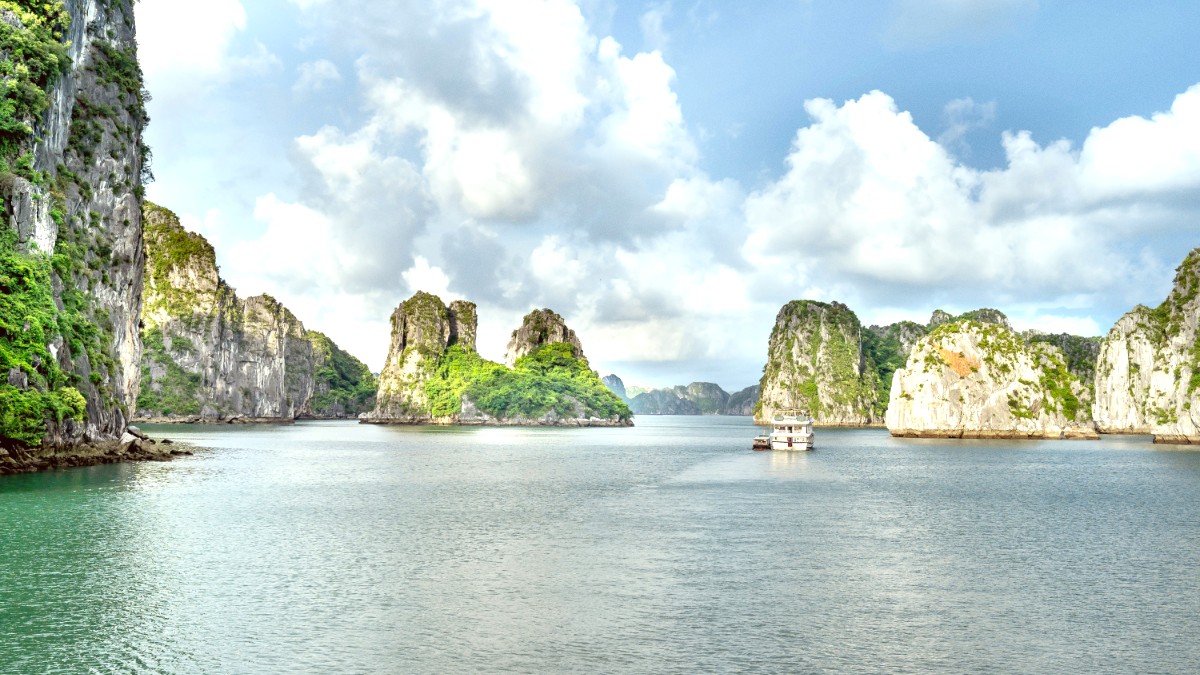
Northeast Vietnam, Vietnam
Halong City’s public transportation system assists budget-conscious travelers and those seeking a local experience. However, it lacks the extensive metro or tram networks found in larger global cities.
Halong City operates a local bus network connecting different parts of the city, including the Bai Chay tourist area, the Hon Gai administrative center, and Tuan Chau Island. These buses are generally slower than taxis or ride-sharing, making frequent stops.
Bai Chay Bus Station serves as the main hub for long-distance buses traveling to and from Hanoi.
Local buses are generally slower than taxis or ride-sharing, making frequent stops.
Public buses are generally not wheelchair accessible, and infrastructure for mobility needs is limited.
Look for Mai Linh (green) and Vinasun (white); they use meters. Insist on meter use or agree on fare beforehand.
Start at 10,000-15,000 VND/km; short rides usually 30,000-100,000 VND. Cash is preferred.
Most popular ride-sharing app in Vietnam. Offers Grab Car and Grab Bike. Provides fixed prices upfront, cashless payment, GPS tracking.
Licensed taxis and Grab are generally safe. Traditional motorbike taxis (Xe Om) require agreeing on a price beforehand and always wearing a helmet.
Rental options provide flexibility for exploration, especially on Cat Ba Island, where traffic is lighter. Consider your experience and local conditions.
The promenade along the coast near Sun World Halong Complex offers a pleasant walking area. Older parts of Hon Gai also provide walking exploration.
Formal guided walking tours are limited. Self-guided walks are possible in town centers; use a map or navigation app.
Avoid busy main roads for walking or cycling. Exercise extreme caution everywhere due to chaotic traffic. Pedestrians often share sidewalks with motorbikes and vendors.
Halong Bay’s unique geography leads to specific transportation methods designed for sightseeing and water travel, offering distinct ways to experience the area.
Accessibility infrastructure remains limited throughout most of Vietnam.
Public transport and traditional cruises are generally not wheelchair-friendly.
Some newer luxury cruises or hotels may offer better accessibility features.
Inquire in advance about specific accessibility needs.
Travelers with mobility needs may find private transfers and specialized tours beneficial.
These options accommodate specific requirements and offer comfortable experiences.
Beyond the famous cruises, Halong Bay and Cat Ba Island offer a range of activities to enhance your visit.
Visit traditional floating fishing villages like Cua Van or Vung Vieng to observe local life.
Capture the dramatic karsts, serene waters, and local life throughout the bay.
Enjoy the calm of the bay from your cruise deck or unwind on secluded beaches.
Embrace the local pace and be open to spontaneous experiences for a richer journey.
The beauty of Halong Bay often lies in its quiet moments and unexpected discoveries.